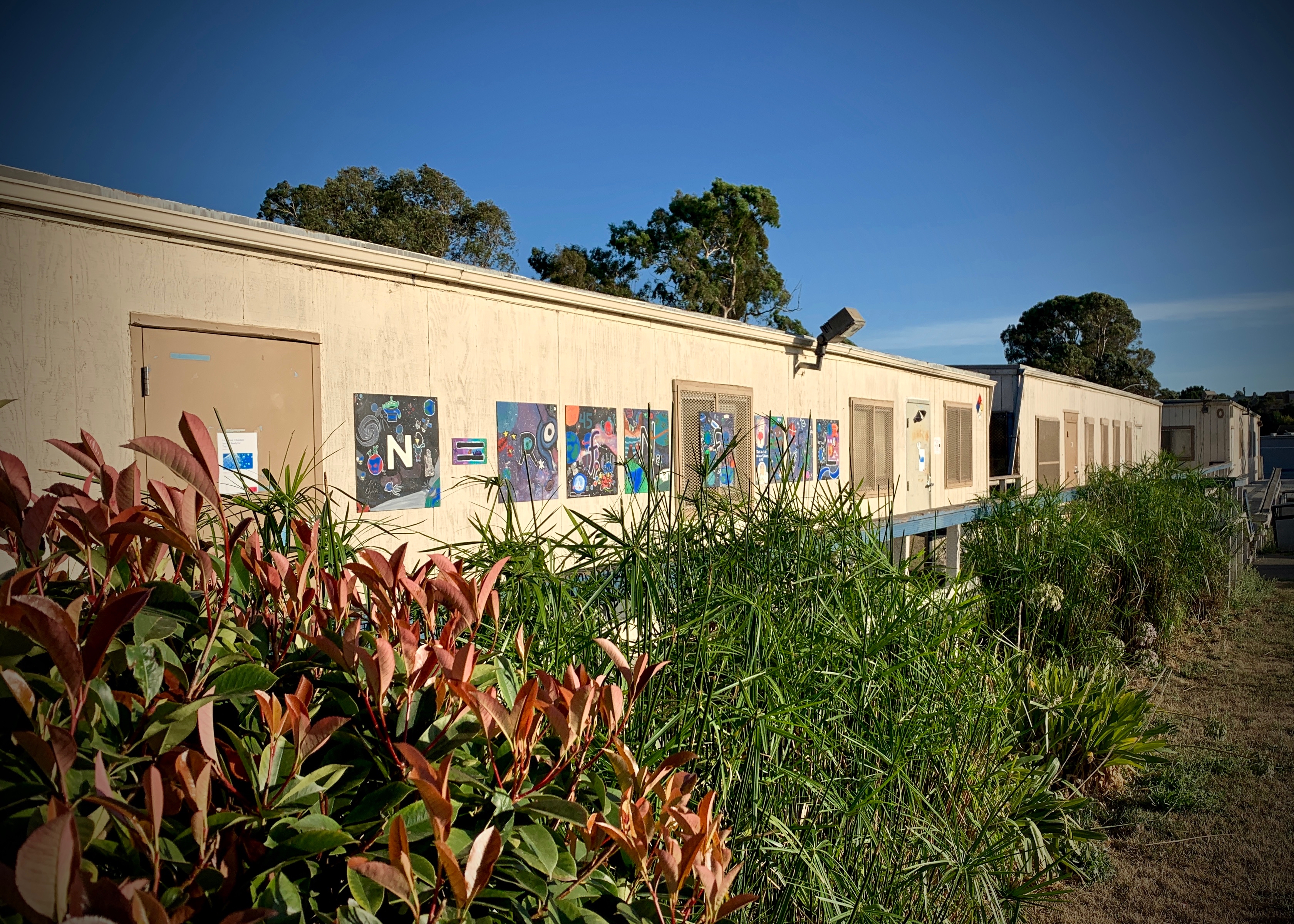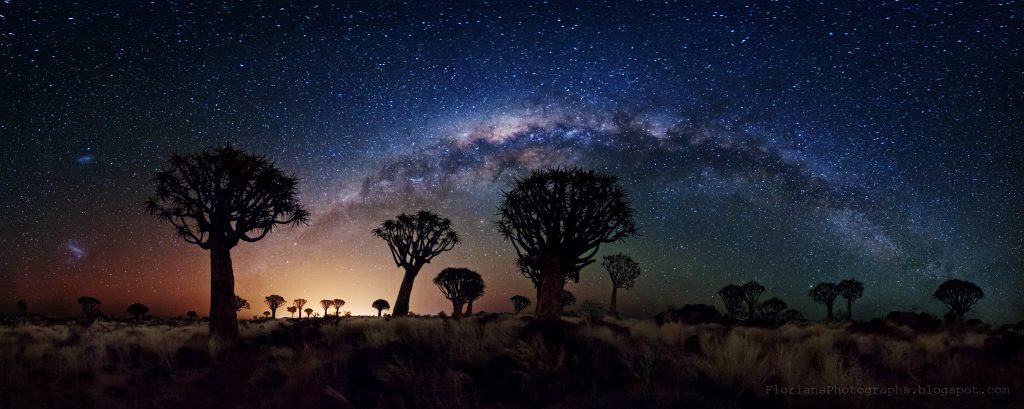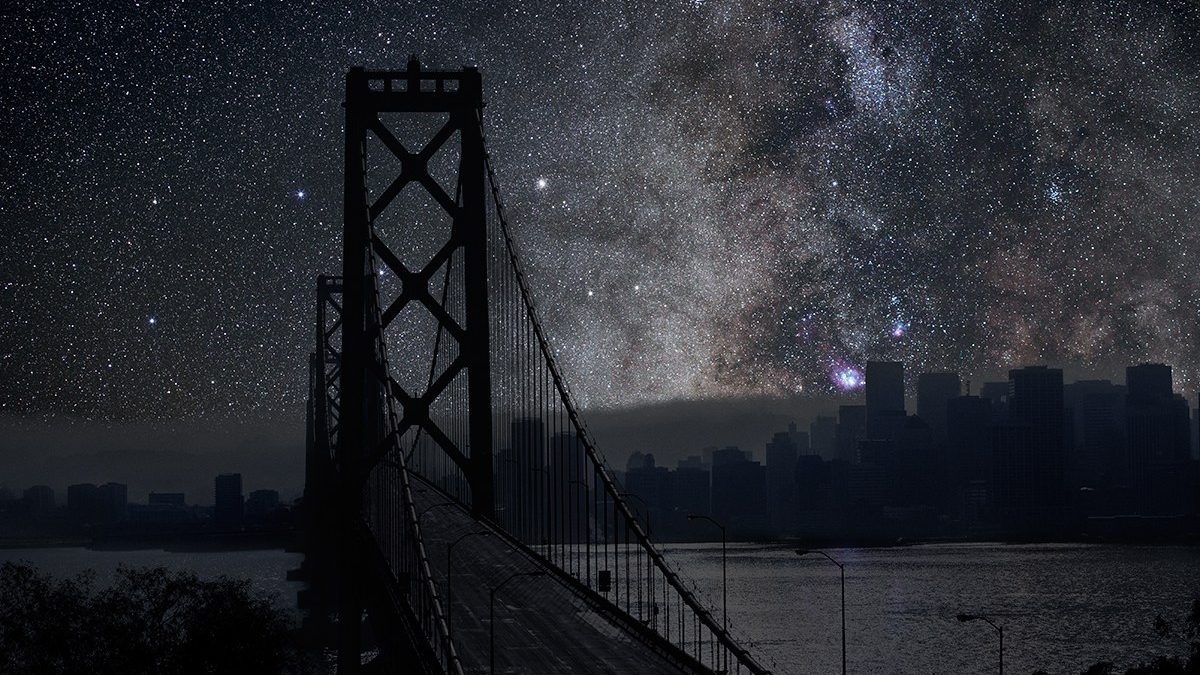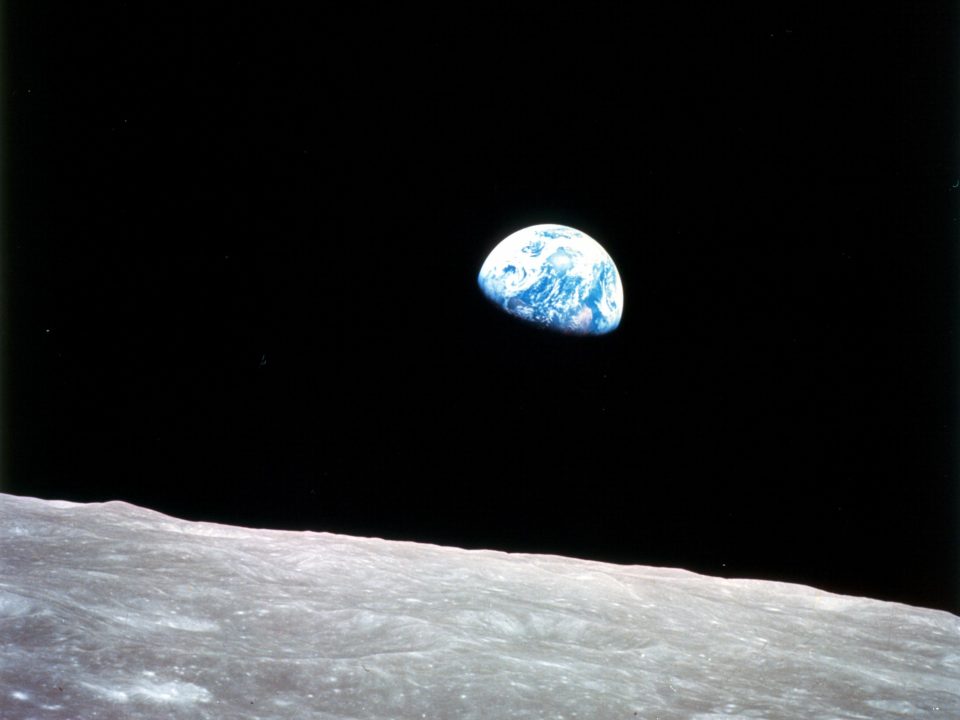
Drake Equation Mural in a High School Physics Class
October 2, 2019
Finding a Space Station with a Backpack Telescope
November 28, 2019Doom and gloom, the end of the world and all that stuff we like to click on.
Time Magazine, New York Times, the Washington Post, USA Today, CNN, and many major news sources are reporting on California’s current blackout initiated by PG&E (Pacific Gas & Electric Co.) to help prevent another major California wildfire. I live in the Bay Area, but am fortunately not affected by the blackouts in my location (at least not yet).
Some reports say that 600,000 have lost their power as of Thursday, October 10, and that another 250,000 are expected to lose power over the next several days (Fuller 2019). Losing electricity is no doubt a horrible nightmare for anyone in our modern society–you can’t watch Netflix, play video games, watch television, charge your phone for more Fortnite or Candy Crush, microwave a burrito, etc. Doom and gloom. Cats and dogs raining from the sky. Mass hysteria.
On a more serious note, there are concerns worth noting, including having no heat or air, security system failure, spoiled food, no gas for carbon vehicles, loss of business, no lights, school closures, looting, crime, and for some, life threatening situations since they have severe medical conditions that are treated by electrically powered devices. Losing electricity is not only bad for superficial reasons, but also for some very serious ones as well.
Is there any positive in all of this?
News organizations like to only display headlines of fear and destruction because it sells papers and digital clicks (i.e. clickbait). Where’s the uplifting positive, or encouraging news located? Additionally, a lot of people are complaining. I’ve seen social media posts saying how evil PG&E is and although I don’t completely disagree about the state of PG&E’s morality, I do think we need to try to start seeing the positive in things and see the forest through the trees.
Maybe we’re somewhat trained to damn the darkness instead of lighting a candle because of how our corporate media system has set up our society, or maybe each one of us has hope deep inside and we’re just waiting for someone to turn off the darkness to allow that hope to shine and move us to see the positive. I think it’s the latter.
Besides the fact that a blackout could help people disconnect and you know talk and look at each other instead of small devices in their hands, it also may actually prevent some major wildfires, and this could also be a golden opportunity for you to look back up at and into our roots–i.e. the cosmos!
In the dark and blind.
In 1994, there was a massive blackout in the city of Los Angeles that left much of the city without light and residents began to call 911 to report a strange glowing gas in the sky (Buck 2017). End times? No. They were seeing the beautiful gases of our own Milky Way galaxy for the first time.
Thierry Cohen completed a beautiful photography series, called Darkened Cities, in which he replaced the skies over light polluted cities with what the sky would look like if it weren’t for the light pollution. The image of San Francisco at the beginning of this post comes from this series. Please consider taking some time to check out the rest of his series on his website and to think about what your skies would be like without light pollution. You can also view his work on his Instagram account @thierrycohenphotography.
Fabio Falchi at the Light Pollution Science and Technology Institute in Thiene, Italy and his team of researchers concluded in a 2016 study that more than 83% of the entire world’s population live in light polluted skies (Light Pollution Atlas Shows Why 80 Percent of North Americans Can’t See the Milky Way 2016), and therefore cannot fully access the cosmos. Additionally, over one-third of humanity and 80% of North America cannot even view the beauty of the Milky Way galaxy (Falchi et al. 2016), our home. We’re blind to the backyard of our own home!

North America’s artificial sky brightness (Falchi et al. 2016).
Time to look at the positive and up at the cosmos!
I may be biased (I’m an astronomer), but I think we should have an international dark sky holiday where all of the world turns off its lights to save energy and peel the veil off from our night sky to reveal the splendor of our cosmos, which is currently being hidden from us. Organizations, such as the International Dark Sky Association, are actively working on creating opportunities to give back the sky to us, and save our communities lots of energy and money in the process. Additionally, innovative companies, such as Unistellar and its eVscope, are creating a new breed of robotic consumer telescopes controlled via smartphone applications that have the power to rip through our light pollution, and give back our stolen night sky.
I know this PG&E thing is a setback for many of us and is causing a lot of problems. However, if you’re in the affected area, maybe it will help ease the pain and struggle a bit to go outside and look up at the beautiful stars from which we came. In blackout areas, it is unlikely to be dark enough anywhere near the city of San Francisco to actually see the Milky Way during this current blackout, but it’s worth a try, and it should be better than most nights (i.e. you’ll see more stars).
At the very least, if you go out tonight and look up and don’t see the Milky Way–whether you’re in a blackout area or not–if you just look up anyways, then you can get back some lost wonder, hope, and be inspired for a better future. You can also then be encouraged to see the Milky Way in your future by planning a trip to a dark sky location, or by helping to implement a dark sky holiday in your community and beyond.
We can also see the forest through the trees and know that by looking up that we are learning that all setbacks are not all doom and gloom, but learning opportunities for a better and brighter tomorrow, even if there are no lights.

NASA APOD 2016 May 15. Milky Way Over Quiver Tree Forest. Image Credit & Copyright: Florian Breuer
References
Buck, S 2017, During a 1994 blackout, L.A. residents called 911 when they saw the Milky Way for the first time, TIMELINE, viewed 10 September 2019 <https://timeline.com/los-angeles-light-pollution-ebd60d5acd43>.
Cohen, Thierry. Darkened Cities. San Francisco 37° 48’ 30’’ N 2010-10-09 Lst 20:58 <https://thierrycohen.com/pages/work/starlights.html>
Falchi, F, Cinzano, P, Duriscoe, D, Kyba, CCM, Elvidge, CD, Baugh, K, Portnov, BA, Rybnikova, NA & Furgoni, R 2016, ‘The new world atlas of artificial night sky brightness’, Science Advances, vol. 2, no. 6, p. e1600377.
Fuller, T 2019, Californians Confront a Blackout Induced to Prevent Blazes, The New York Times viewed 10 October 2019 <https://www.nytimes.com/2019/10/10/us/pge-outage.html>.
Light Pollution Atlas Shows Why 80 Percent of North Americans Can’t See the Milky Way, 2016, MIT Technolgy Review viewed 10 October 2019 <https://www.technologyreview.com/s/602364/light-pollution-atlas-shows-why-80-percent-of-north-americans-cant-see-the-milky-way/>.




